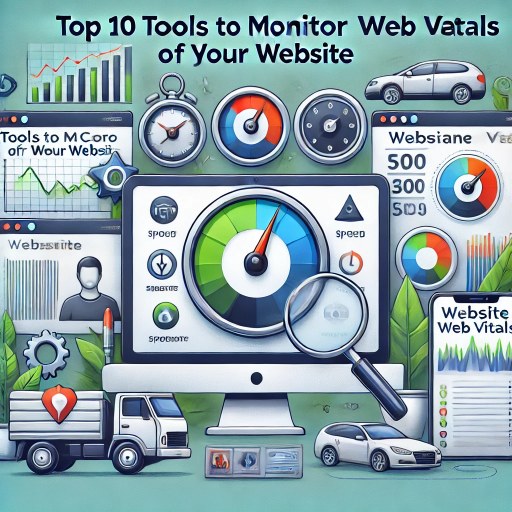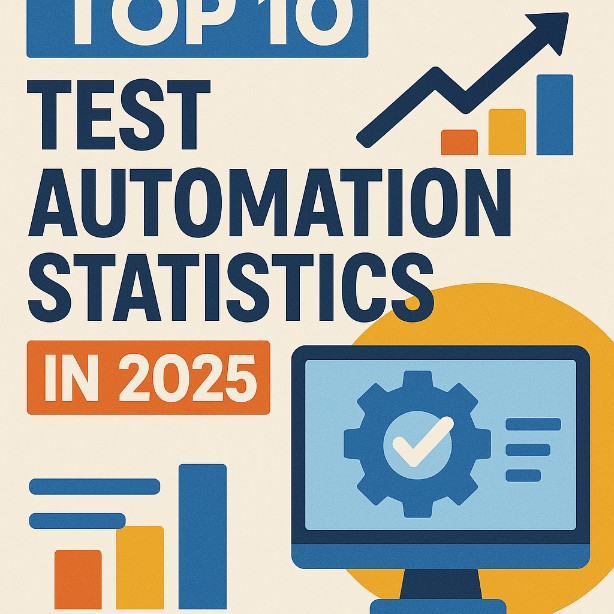Website accessibility is a critical aspect of modern web development. In 2025, ensuring that your website is accessible means not only complying with guidelines but also providing an inclusive user experience. Recent trends show that over 70% of digital experiences now integrate accessibility checks into their development lifecycle, with websites demonstrating improved user engagement by up to 50% when accessibility features are well implemented.
Understanding Website Accessibility
Accessibility in websites means designing and developing your site so that everyone—including people with disabilities—can navigate, understand, and interact with your content. It’s about removing barriers and ensuring equal access to information.
Is Your Infrastructure Ready for Global Traffic Spikes?
Unexpected load surges can disrupt your services. With LoadFocus’s cutting-edge Load Testing solutions, simulate real-world traffic from multiple global locations in a single test. Our advanced engine dynamically upscales and downscales virtual users in real time, delivering comprehensive reports that empower you to identify and resolve performance bottlenecks before they affect your users.
What is Website Accessibility?
Website accessibility involves designing web content that can be easily used by people with visual, auditory, cognitive, and motor disabilities. This ensures that no user is excluded from accessing your site’s information.
The 4 Principles of Web Accessibility
The core principles, often remembered by the acronym POUR, include:
- Perceivable: Information and user interface components must be presented in ways users can perceive.
- Operable: User interface components and navigation must be operable.
- Understandable: Information and the operation of the user interface must be understandable.
- Robust: Content must be robust enough to be interpreted reliably by a wide variety of user agents, including assistive technologies.
The 4 Guidelines of WCAG
WCAG (Web Content Accessibility Guidelines) is organized under the same four principles:
Think your website can handle a traffic spike?
Fair enough, but why leave it to chance? Uncover your website’s true limits with LoadFocus’s cloud-based Load Testing for Web Apps, Websites, and APIs. Avoid the risk of costly downtimes and missed opportunities—find out before your users do!
- Perceivable
- Operable
- Understandable
- Robust
The 20% Rule for Accessibility
The 20% rule suggests that if 20% or more of your audience has disabilities, your website should be designed with accessibility in mind. This benchmark serves as a practical guide for inclusive design strategies.
Top Tools for Website Accessibility Testing
Choosing the right tools can streamline your accessibility testing and ensure compliance with evolving standards. Below is a comparative summary of top tools—including a standout option from LoadFocus—that help you maintain an accessible website.
| Tool | Best For | Key Features | Use Case |
|---|---|---|---|
| LoadFocus Accessibility Suite | Comprehensive accessibility & performance testing | Real user simulation, synthetic monitoring, mobile emulation, and visual regression testing for design and compliance checks | Ideal for end-to-end accessibility and performance analysis |
| Synthetic Monitoring | Continuous, automated accessibility simulation | Automated accessibility checks, detailed alerts, and actionable insights | Regular monitoring across diverse user scenarios |
| Mobile Emulation | Testing accessibility on mobile devices | Emulates various mobile environments, responsive design validation, and user interaction simulations | Ensuring mobile-friendly accessibility |
| Visual Regression Testing | Detecting visual inconsistencies and contrast issues | Automated baseline comparisons, regression detection, and detailed reporting | Validating design consistency and accessibility compliance |
| Page Speed Monitoring | Optimizing load times for an accessible user experience | Fast website speed test, performance insights, and optimization tips | Enhancing accessibility through improved load performance |
Note: For optimal website performance during accessibility tests, consider using load testing to simulate real-world traffic conditions and ensure your site remains accessible under load.
Best Practices for Website Accessibility Testing
To achieve a fully accessible website, consider the following best practices:
LoadFocus is an all-in-one Cloud Testing Platform for Websites and APIs for Load Testing, Apache JMeter Load Testing, Page Speed Monitoring and API Monitoring!
- Simulate Real-World Conditions: Use load testing to understand how your site performs under various traffic conditions.
- Monitor Performance Regularly: Implement a website speed test to ensure that accessibility elements load promptly.
- Utilize Synthetic Monitoring: Deploy synthetic monitoring tools to simulate user interactions and spot accessibility issues.
- Test Across Devices: Employ mobile emulation to verify accessibility on smartphones and tablets.
- Ensure Visual Consistency: Use visual regression testing to catch any design discrepancies that may affect usability.
How to Make Your Website Accessible
Creating an accessible website involves both design and development strategies:
- Semantic Markup: Use clear HTML structures and provide descriptive alternative text for images.
- Keyboard Navigation: Ensure that your site can be fully navigated using only a keyboard.
- Color Contrast & Font Size: Choose high-contrast color schemes and readable font sizes to aid users with visual impairments.
- Accessible Forms: Label form elements correctly and include error messages that are easy to understand.
- Follow Established Guidelines: Adhere to WCAG recommendations and perform regular audits using the tools mentioned above.
FAQs
What is accessibility in websites?
Website accessibility is the practice of designing websites so that people with a wide range of abilities, including disabilities, can use them effectively.
What are the 4 principles of Web Accessibility?
The four principles are Perceivable, Operable, Understandable, and Robust—collectively known as POUR.
How do I make my website accessible?
You can make your website accessible by using semantic HTML, providing alternative text for images, ensuring keyboard navigability, maintaining proper color contrast, and following WCAG guidelines.
What is the 20% rule for accessibility?
The 20% rule is a guideline suggesting that if 20% or more of your audience has disabilities, your website should be designed with accessibility in mind.
Is WCAG 2.2 a legal requirement?
WCAG 2.2 is widely recognized as best practice for accessibility; however, its legal requirement varies by jurisdiction. In many regions, adherence to these guidelines is encouraged or mandated in specific sectors.
What are the 4 guidelines of WCAG?
The four guidelines of WCAG are Perceivable, Operable, Understandable, and Robust. These form the foundation for ensuring accessible web content.
Conclusion
In 2025, website accessibility testing is more crucial than ever. By using comprehensive tools like the LoadFocus Accessibility Suite and following best practices, you can ensure your website is inclusive and performs seamlessly under various conditions. Embrace these tools and strategies to build a web experience that benefits all users.





